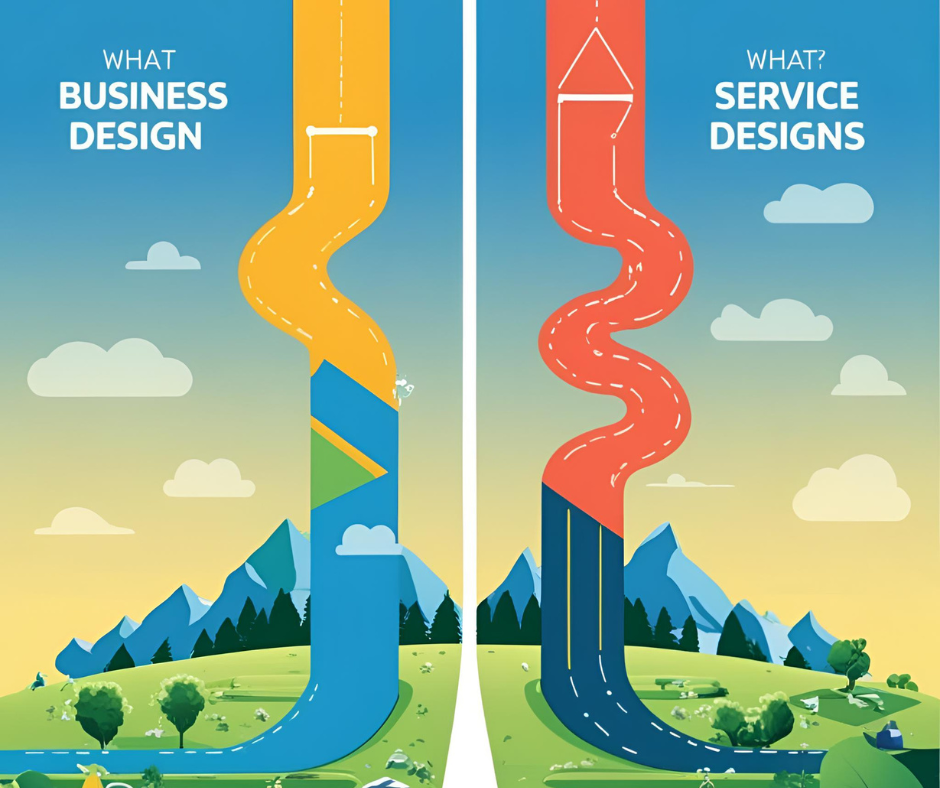How to Design a Project Schedule That Works
Building a Project Plan That Brings Your Strategy to Life
Behind every successful project is a detailed, realistic schedule that keeps everyone aligned, on track, and moving toward clear goals. But designing a project schedule isn’t just about plotting deadlines. It’s about weaving together tasks, people, time, and risk into one coherent roadmap.
I’m Steven Sondang, a Seasoned Digital Marketer and Business Strategy Specialist with over 15 years of experience helping startups and growing teams turn ideas into execution. I’ve seen firsthand how a well-crafted project schedule can make or break a team’s momentum.
In this guide, I’ll walk you through How to Design a Project Schedule That Works in the real world—not just on paper.
Why Your Project Schedule Matters
Creating a solid project schedule is about more than timelines and checkboxes. It’s your chance to:
- Visualise the path to success
- Prevent delays and bottlenecks
- Coordinate team efforts
- Track progress and adapt when needed
- Maintain accountability
It also serves as the foundation for your communications, reporting, budgeting, and resource allocation. In short—it’s your operational backbone.
Step 1: Break Down the Work
Goal: Translate your project’s overall objective into manageable tasks and deliverables to ensure clarity and control.
Example: You’re launching an online training platform. Start by breaking it down into:
- Curriculum planning
- Platform development
- Instructor onboarding
- Marketing plan
- Launch event
Tip: Start with the big picture, then zoom in layer by layer. Use sticky notes or mind maps to visualise how pieces fit together.
Example: You’re launching an online training platform. Start by breaking it down into:
- Curriculum planning
- Platform development
- Instructor onboarding
- Marketing plan
- Launch event
Every project starts with a big goal.. But to deliver on that goal, you’ll need to deconstruct it into manageable pieces.
Use your Work Breakdown Structure (WBS) to identify:
- Tasks
- Sub-tasks
- Deliverables
This clarity ensures that nothing important gets missed and that each person understands what they’re responsible for.
Example:
If your project is “Launch new e-commerce site,” your WBS might break it into:
- Branding and design
- Platform setup
- Payment integration
- SEO and content migration
- Launch marketing
Each of these can be broken further into detailed tasks.
Step 2: Assign Owners, Time, and Cost
Goal: Clearly define who is responsible for each task, how long it will take, and what resources are needed.
Example: In the training platform project:
- Assign the developer to build the course upload module (estimated 20 hours)
- Assign the content team to finalise five modules (15 hours)
- Allocate $2,000 for video production
Tip: Don’t just estimate hours—check calendars and workloads. Use resource planning tools to confirm availability.
Example: In the training platform project:
- Assign the developer to build the course upload module (estimated 20 hours)
- Assign the content team to finalise five modules (15 hours)
- Allocate $2,000 for video production
Once you’ve outlined the tasks,, you need to determine:
- Who will complete them
- How long they will take
- What they will cost
This helps build realistic timelines and budgets.
Tip:
Get input directly from the people doing the work. Their estimates tend to be more accurate than assumptions.
Step 3: Identify Dependencies
Goal: Understand the logical sequence of tasks to prevent bottlenecks and delays.
Example: The platform can’t go live before:
- All content is uploaded
- Payment gateway is integrated
- QA testing is complete
Tip: Use “finish-to-start” logic: what tasks must end before others can begin? Visualise these links in a flowchart or Gantt view.
Example: The platform can’t go live before:
- All content is uploaded
- Payment gateway is integrated
- QA testing is complete
Not all tasks can be done at the same time.** Some can only begin once others are completed.
Map out:
- Sequential dependencies (e.g., design must be done before development)
- Parallel tasks (e.g., marketing can begin while backend development is underway)
Tools like Gantt charts or dependency maps help visualise this.
Step 4: Allocate Resources
Goal: Match available resources (people, tools, money) with the project’s task demands.
Example:
- Use the internal development team for coding
- Outsource design to a freelancer available next month
- Allocate shared Zoom account for virtual sessions
Tip: Build in buffer time around scarce resources. If a key person is overbooked, delays will cascade across tasks.
Example:
- Use the internal development team for coding
- Outsource design to a freelancer available next month
- Allocate shared Zoom account for virtual sessions
You now know what needs to be done. and when. But what about the people and tools needed to do it?
Consider:
- Staff availability
- Equipment or software
- External vendors
- Budget constraints
Assign resources based on availability and skill. Overloading one team member can stall the entire project.
Step 5: Choose Your Communication Tools and Rhythm
Goal: Establish consistent communication practices to keep the team aligned.
Example:
- Daily stand-ups via Slack (10 minutes)
- Weekly Zoom meetings for progress review
- Use Trello to track tasks and deadlines
Tip: Over-communicate early. Set expectations about when updates are shared and who makes decisions.
Example:
- Daily stand-ups via Slack (10 minutes)
- Weekly Zoom meetings for progress review
- Use Trello to track tasks and deadlines
Clear communication is essential.. Define:
- How often you’ll meet (e.g., daily stand-ups, weekly reviews)
- What tools you’ll use (e.g., Slack, Asana, Zoom, email)
- How updates will be shared (status reports, dashboards)
Keep it lightweight but consistent.
Pro Tip:
Use a shared platform so everyone can see the latest schedule, assignments, and progress.
Step 6: Plan for Risk and Change
Goal: Anticipate potential issues and build in flexibility to manage surprises.
Example:
- Identify that a key freelancer may drop out—have a backup ready
- Add 10% buffer to video editing timelines
- Review risk status in every weekly meeting
Tip: Don’t just identify risks—assign owners to monitor and act on them.
Example:
- Identify that a key freelancer may drop out—have a backup ready
- Add 10% buffer to video editing timelines
- Review risk status in every weekly meeting
Every project faces bumps in the road.. Your schedule should be built with flexibility and risk awareness in mind.
Ask:
- What could derail the timeline?
- Where are the highest-risk tasks?
- What contingency plans are needed?
Include buffer time where appropriate. Don’t assume every step will go perfectly.
Step 7: Build the Schedule
Goal: Create a visual and time-bound plan that guides execution and progress tracking.
Example:
- Gantt chart shows content delivery ending April 10
- Developer tasks from April 11–25
- Platform go-live May 5
Tip: Choose tools your team will actually use—simplicity beats sophistication if it boosts adoption.
Example:
- Gantt chart shows content delivery ending April 10
- Developer tasks from April 11–25
- Platform go-live May 5
Using all the data you’ve gathered,, lay out your full timeline. Choose a format that matches your project’s complexity:
- Simple spreadsheet (for smaller projects)
- Gantt chart (for clear timelines and dependencies)
- Agile sprints (for fast-moving or iterative projects)
Include:
- Task start and end dates
- Milestones
- Owner assignments
- Key dependencies
This is your execution map.
Step 8: Monitor, Adapt, and Improve
Goal: Use your schedule as a living document to continuously track progress and improve.
Example:
- Midway review reveals content creation is behind—shift deadline and reassign one more writer
- Remove non-critical design features to stay on timeline
Tip: Hold short retrospectives after key milestones. Use lessons learned to adjust your next phase.
Example:
- Midway review reveals content creation is behind—shift deadline and reassign one more writer
- Remove non-critical design features to stay on timeline
Once the project begins,, your schedule becomes a living document.
Use it to:
- Monitor progress
- Make adjustments
- Flag delays early
- Celebrate milestones
Regular check-ins ensure the schedule remains accurate and that blockers are removed quickly.
Why Schedules Fail—and How to Prevent It
Avoid common pitfalls:
- Over-optimistic estimates → Pad with buffers
- Lack of ownership → Assign clear task owners
- Too much detail too early → Stay flexible early on
- No tracking system → Use tools to keep everyone aligned
Summary
A great project schedule is not about rigid control—it’s about focused coordination.
- Start with the WBS
- Assign people, time, and cost
- Map dependencies and resources
- Communicate clearly
- Plan for risk
- Stay flexible and monitor constantly
As someone who’s overseen everything from global marketing rollouts to startup rebrands, I’ve learned this: A thoughtful schedule earns trust, unlocks clarity, and accelerates delivery.
And when you’re ready to lead with confidence, I’m here to help.






